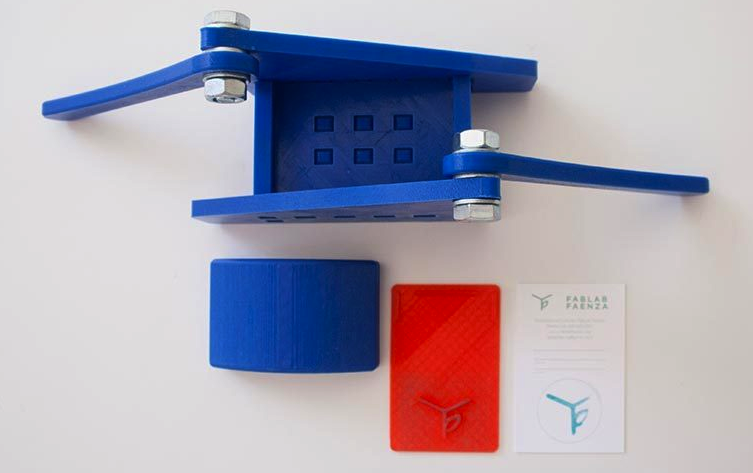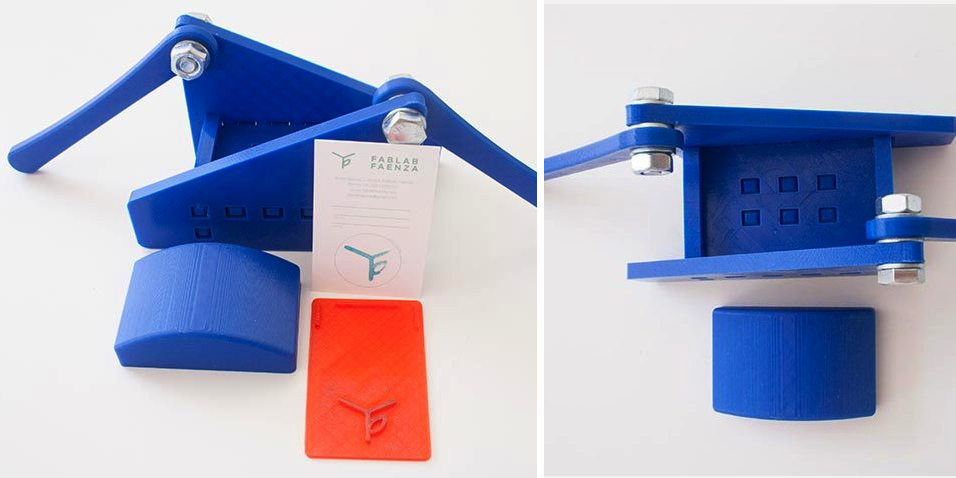
Fast forward almost 600 years, and printing is a lot different today. In fact, we are experiencing a Gutenberg-like renaissance of our own, only this time it’s in 3D. 3D printing has become one of the most talked about futuristic/modern technologies of the past few years, with scientists, architects, designers and surgeons from all over the globe looking toward the technology with tremendous hope for the future. For one man named Costantino Montanari, 3D printing has allowed him to turn back the clock some 550+ years to create a miniature printing press of his own.
“I was interested in making a free version of what once was called the printing press,” Montanari, who lives in Italy, tells 3DPrint.com. “Operation is simple, as it merely requires a roller passing the ink on the printing plate. The printing plate is placed inside the press with the ink side at the top. Then you put the card into contact with the printing plate, insert the “soap piece” and press on the two levers which in turn will press press everything together like a sandwich, allowing the passage to get ink from the plate to the business card”
In all, the printing press required six 3D printed pieces, and two bolts which were not 3D printed. Montanari tells us that he designed his device in such a way that it could be printed on any 3D printer with a build area of at least 200mm x 200mm. The individual parts were designed using Rhino 5, which is a professional design software wthat he frequently uses.
While Montanari’s printing press was printed entirely out of PLA plastic, he does suggest that using a more flexible filament such as NinjaFlex would help the device perform better. It only takes a few hours to print out the device, and assembly is quite easy.
While this 3D printed printing press doesn’t come close to topping the Gutenberg press of the 15th century, it certainly goes a long way in proving some of the interesting things that can now be fabricated on a 3D printer.
